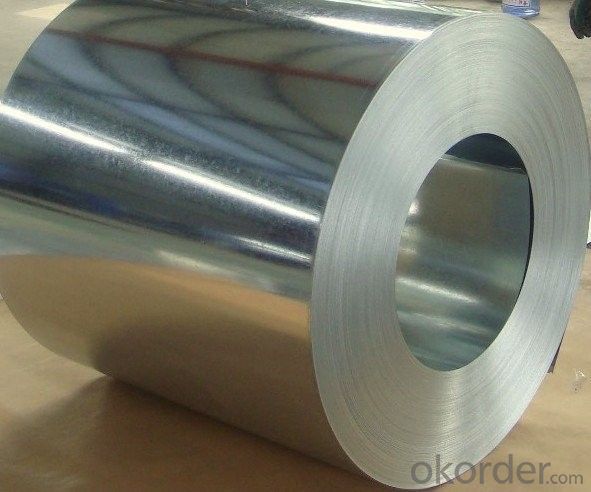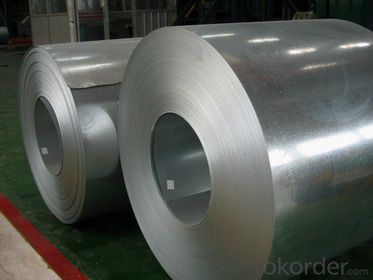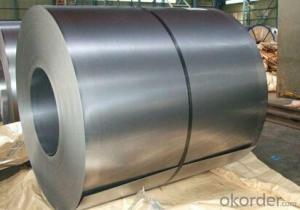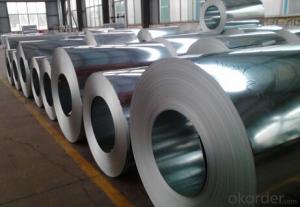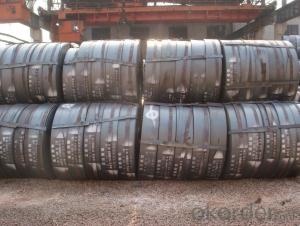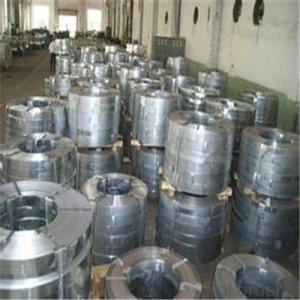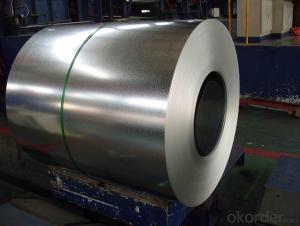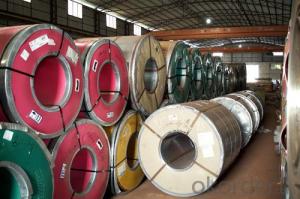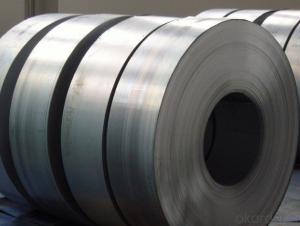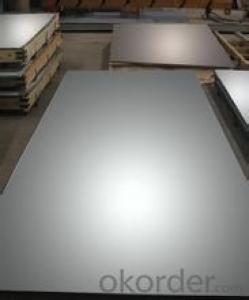Hot Dipped Galvanized Steel Coil/Hot Dipped Galvanized Steel Strips Coil/Zinc Coated Steel Coil
- Loading Port:
- Tianjin
- Payment Terms:
- TT OR LC
- Min Order Qty:
- 500 m.t.
- Supply Capability:
- 100000 m.t./month
OKorder Service Pledge
OKorder Financial Service
You Might Also Like
Hot Dipped Galvanized Steel Coil/Hot Dipped Galvanized Steel Strips Coil/Zinc Coated Steel Coil Specifications:
Steel strips coils galvanized
Material: Q195, Q215, Q235, Q345B, SGCC, DX51D+Z
Thickness:0.75-4.5mm
Width:32-750mm
Zinc coating: 60-550g/m2
Hot Dipped Galvanized Steel Coil/Hot Dipped Galvanized Steel Strips Coil/Zinc Coated Steel Coil Description:
Galvanized steel coil are widely used in the construction industry, as raw material for the production of corrugated panels, fencing products, drywall panel profiles, ventilation systems etc. Recommended for both outside and inside usage, galvanized steel has a high resistance to corrosion in different environments, due to a protective layer of zinc of 100 – 180 grams per square metre.
Main Features of Hot Dipped Galvanized Steel Coil/Hot Dipped Galvanized Steel Strips Coil/Zinc Coated Steel Coil:
Hot-dip galvanized steel coils are produced by immersing steel in a zinc bath. An appropriate galvanizing process requires a pretreatment process during which the steel passes through different baths which prepare the surface for zinc coating. In this stage, chemicals are used to clean the surface of the steel. After the chemical treatment, the steel coils pass through a bath of melted zinc at temperatures around 460 ° C. The resulting uniform coating is finished through a process of skin-passing to provide smooth and shiny appearance of the finished product. To store for a longer period, the hot-dip galvanized coils can be delivered with a final oil coating, according to the customer’s demand.
Hot Dipped Galvanized Steel Coil/Hot Dipped Galvanized Steel Strips Coil/Zinc Coated Steel Coil Images:
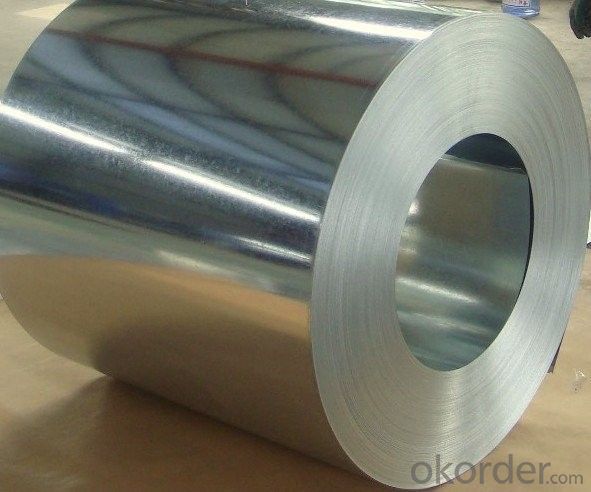
FAQ:
What certificates do you have for your products?
ISO
- Q: What are the main factors affecting the surface finish of steel strips?
- The main factors affecting the surface finish of steel strips include the quality of the raw materials used, the manufacturing process employed, the condition of the equipment and machinery, the expertise and skill of the operators, and any external factors such as temperature, humidity, and contamination.
- Q: What is the typical wear resistance of steel strips?
- The typical wear resistance of steel strips can vary depending on factors such as the specific type of steel used, its hardness, surface finish, and the conditions in which it is exposed to wear. However, steel strips are generally known for their excellent wear resistance, making them suitable for a wide range of applications requiring durability and resistance to friction or abrasion.
- Q: How do steel strips perform in terms of thermal conductivity?
- Steel strips have relatively high thermal conductivity, meaning they are efficient in conducting heat. This property allows them to quickly transfer and distribute thermal energy, making them suitable for various applications that require heat dissipation or heat transfer.
- Q: How are steel strips cut to the desired length?
- Steel strips are typically cut to the desired length using a variety of methods, such as shearing, slitting, or sawing. These processes involve using specialized machines that apply force or saw blades to accurately cut the steel strips to the required dimensions.
- Q: How are steel strips processed for engraving?
- Steel strips are typically processed for engraving by first cleaning and preparing the surface to remove any dirt, oil, or rust. Then, a design or pattern is either etched or engraved onto the steel strip using specialized tools or machines. This process may involve chemical etching, laser engraving, or mechanical engraving techniques, depending on the desired outcome. After engraving, the steel strips may undergo further treatments such as polishing or coating to enhance the appearance and durability of the engraved design.
- Q: How are steel strips tested for cleanliness?
- To guarantee compliance with the necessary standards, different techniques are employed to examine the cleanliness of steel strips. Among these methods, visual inspection is commonly used, wherein trained professionals visually scrutinize the steel strip's surface to identify any visible indications of dirt, oil, rust, or other impurities. This examination is conducted under sufficient lighting conditions to ensure precise detection. Aside from visual inspection, alternative approaches are utilized to assess the cleanliness of steel strips. One such technique involves the utilization of solvents or detergents for cleansing purposes. Specific solvents or detergents are employed to eliminate any surface contaminants present on the steel strips. Following the cleaning process, the strips are thoroughly rinsed to eliminate any remaining cleaning agents. An additional method to test the cleanliness of steel strips is through the use of a surface analyzer. This device is capable of detecting and quantifying the presence of contaminants on the surface of the steel strip. It can evaluate parameters like oil, grease, or particulate matter, providing a quantitative assessment of cleanliness. Furthermore, steel strips can also undergo laboratory analysis for cleanliness testing. This process entails extracting samples from the strips and subjecting them to various tests, such as chemical analysis or microscopy. These tests are effective in identifying and measuring specific contaminants that may be present on the surface of the steel strips. In conclusion, the cleanliness of steel strips plays a crucial role in ensuring their quality and performance. By employing diverse testing methods, such as visual inspection, solvent or detergent wash, surface analysis, and laboratory analysis, manufacturers can ensure that the steel strips satisfy the required cleanliness standards necessary to meet the demands of various industries.
- Q: How are steel strips used in the production of consumer electronics?
- Steel strips have various applications in the production of consumer electronics. Firstly, they are commonly used as components for manufacturing electronic device casings or housings. By shaping and sizing the strips, they create a sturdy structure that protects the internal components. Moreover, steel strips are utilized in the production of brackets, frames, and other structural components within consumer electronics. These strips are cut, shaped, and welded to create supports and reinforcements that secure and stabilize different parts of the electronic device. In addition, steel strips are employed in the production of connectors and electrical contacts. They are precisely cut and treated to ensure proper conductivity and durability. These strips establish electrical connections within the device, enabling the flow of current between components. In summary, steel strips are essential in the production of consumer electronics as they provide strength, durability, and functionality to the final product. Their versatility and ability to be formed into various shapes make them valuable in the manufacturing process, ensuring the reliability and longevity of electronic devices.
- Q: Are steel strips suitable for architectural applications?
- Yes, steel strips are suitable for architectural applications due to their high strength, durability, and versatility. They can be used in various architectural elements such as cladding, roofing, facades, and decorative features. Steel strips offer excellent resistance to corrosion and can be easily shaped and fabricated to meet specific architectural designs. Additionally, their aesthetic appeal and wide range of finishes make them a popular choice for modern architectural projects.
- Q: How are steel strips processed for vibration dampening?
- Steel strips can be processed for vibration dampening through various techniques. One common method is to apply a damping material, such as a viscoelastic polymer, onto the surface of the steel strip. This material is specifically designed to absorb and dissipate vibration energy, thereby reducing the amplitude of vibrations. The damping material can be applied using adhesive bonding, spraying, or even lamination techniques. Another approach is to incorporate vibration-dampening features directly into the steel strip itself. This can be achieved through the use of specialized manufacturing processes, such as roll forming or stamping, which introduce specific shapes or patterns into the strip. These shapes or patterns can help to disrupt the transmission of vibrations, effectively reducing their impact. Furthermore, steel strips can be treated with various coatings to enhance their vibration-dampening properties. For instance, applying a rubber or elastomer coating onto the surface of the strip can provide additional vibration absorption and isolation. These coatings can be applied using techniques such as dip coating, spray coating, or even electroplating. Overall, the processing of steel strips for vibration dampening involves incorporating damping materials, introducing vibration-dampening features, or applying specialized coatings onto the surface of the strip. These techniques aim to minimize the transmission of vibrations and improve the overall performance and durability of the steel strip in applications where vibration control is critical.
- Q: How are steel strips coated with a passivation layer?
- Passivation is a process that involves coating steel strips with a layer to reduce reactivity and enhance corrosion resistance. Typically, steel strips are immersed in an acidic solution, usually a mixture of nitric acid and water, to achieve passivation. To begin the passivation process, the steel strips are thoroughly cleaned to remove any contaminants like dirt, oil, or grease. This step is crucial as impurities can interfere with the effectiveness of passivation. Once cleaned, the strips are put into the passivation bath where a chemical reaction occurs between the acid solution and the steel. This reaction forms a thin oxide layer on the surface of the strips, acting as a barrier against corrosive elements like oxygen and moisture that can cause rust and corrosion. During passivation, the acid solution also removes any existing impurities on the steel surface, like iron oxide. This helps improve the overall corrosion resistance of the strips. After a specified passivation time, the steel strips are rinsed thoroughly to remove any remaining acid solution. Then, they are dried completely to eliminate any moisture. In some cases, a post-passivation treatment may be applied to further enhance corrosion resistance. This can involve applying a thin layer of oil or a chemical sealant to the passivated surface. Overall, the passivation process adds a protective layer to steel strips, increasing their resistance to corrosion and extending their lifespan. This is especially important in applications where the strips will be exposed to harsh environments or corrosive substances.
Send your message to us
Hot Dipped Galvanized Steel Coil/Hot Dipped Galvanized Steel Strips Coil/Zinc Coated Steel Coil
- Loading Port:
- Tianjin
- Payment Terms:
- TT OR LC
- Min Order Qty:
- 500 m.t.
- Supply Capability:
- 100000 m.t./month
OKorder Service Pledge
OKorder Financial Service
Similar products
Hot products
Hot Searches
Related keywords


